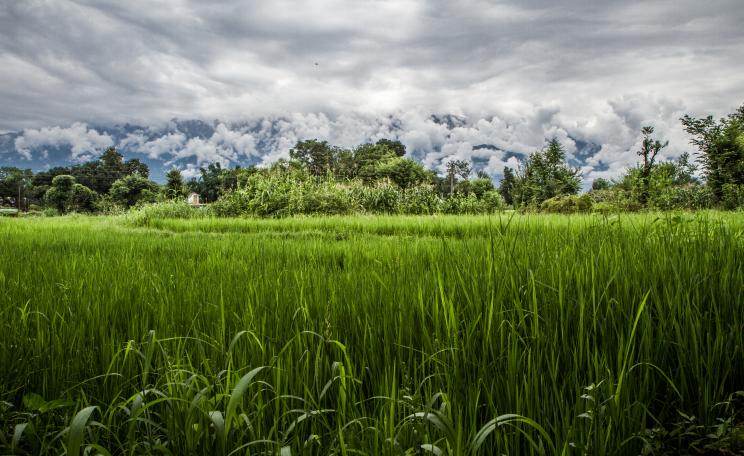The Indo-Pacific warm pool, shown in bright orange, heated by 0.5C in the past 50 years (Image courtesy NASA Earth Observatory)
'Uneven' sea level rises are posing a threat to densely populated coastal areas around the Indian Ocean, according to researchers.
Sea levels have risen across the world as a result of thermal expansion of the ocean (water expands as it heats up) and as melting ice adds more water volume.
However, researchers from the National Center for Atmospheric Research (NCAR) and the University of Colorado have shown that the rises are not uniform across the world and are affected by other changes in atmospheric or oceanic currents.
In the Indian Ocean this has resulted, since the 1960s, in substantial decreases in sea levels in the south tropical region, including the Seychelles Islands and the island of Zanzibar off Tanzania.
In contrast, sea level rises have been much higher along the coastlines of the Bay of Bengal, the Arabian Sea, Sri Lanka and the Indonesian islands of Sumatra and Java.
In a study published this week in the journal Nature Geoscience, which could have implications for how scientists predict sea level changes, the authors blame complex atmospheric wind patterns for the uneven rises.
'Complex circulation patterns in the Indian Ocean may also affect precipitation by forcing even more atmospheric air than normal down to the surface in Indian Ocean subtropical regions,' says co-author Weiqing Han.
'This may favor a weakening of atmospheric convection in subtropics, which may increase rainfall in the eastern tropical regions of the Indian Ocean and drought in the western equatorial Indian Ocean region, including east Africa.'
The study concludes that if human-caused global warming continues then the pattern they detected was, 'likely to persist and to increase the environmental stress on some coasts and islands in the Indian Ocean'.
Useful links
Patterns of Indian Ocean sea-level change in a warming climate
| READ MORE... | |
 |
INVESTIGATION The world's first environmental refugees The disappearance of Lohachara beneath the waters of the Bay of Bengal created the world’s first environmental refugees. Dan McDougall reports on other islanders in the Sundarbans delta who have no escape from the rising ocean. Photography by Robin Hammond |
 |
NEWS Report lists top ten countries at risk of water shortages Sub-Saharan African countries top list of those with most vulnerable water supplies as report warns of 'looming crisis' in both Asia and Africa from pollution and depletion of natural water resources |
| SPECIAL CONTENT Dan Box Blog: climate change refugees An inhospitable planet? As climate change forces increasingly large numbers of people to flee their homes, Ecologist blogger Dan Box considers what 'climate change refugees' actually means |
|
 |
INVESTIGATION The first climate evacuation: what have we learned? Earlier this year, journalist Dan Box won recognition from environmentalist George Monbiot for documenting the world's first climate change evacuation, of the Carteret islands in the South Pacific. Now, he returns to his experiences to ask if this is the first evacuation of many, how should we do it in future? |
 |
COMMENT Let's use the Gulf Stream to increase UK food production Our current patterns of veg growing mostly ignore the fact that the UK is much warmer than it should be for its latitude - and we could exploit that |







